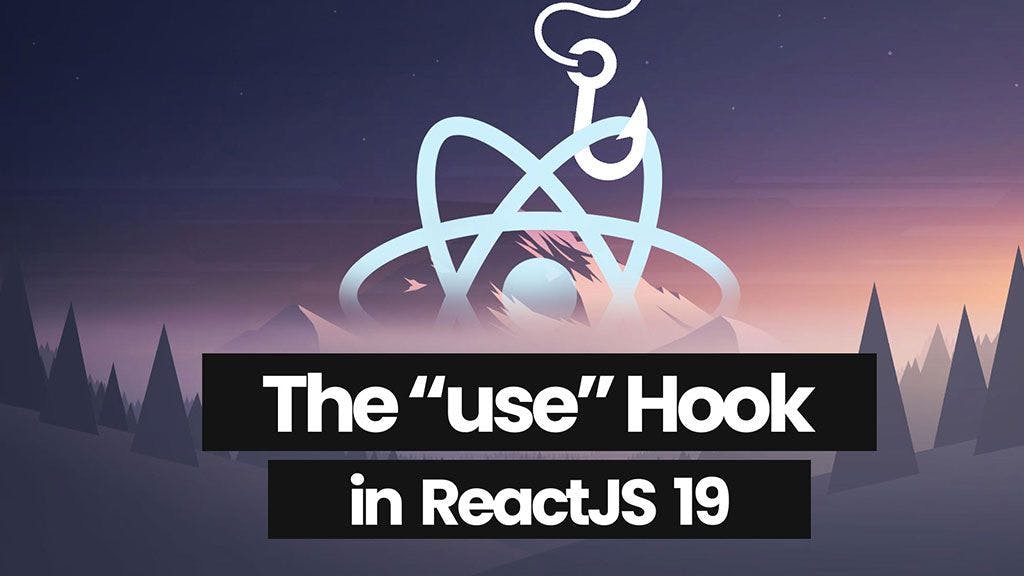React 19 introduces the exciting "use" hook, an experimental but powerful tool that streamlines resource management and data fetching in your applications. While still in its early stages, it holds immense potential to reshape the way we interact with asynchronous data within the React ecosystem.
What is the "use" hook?
Unlike other React hooks that follow a strict structure, the "use" hook breaks the mold. It provides a single, versatile entry point to access the value of diverse resources directly within your component code:
- Promises: For handling asynchronous operations like retrieving data from APIs or performing complex calculations.
- React Contexts: For effortlessly integrating with established context values throughout your component tree.
Key Features and Benefits:
- Asynchronous resource handling: The "use" hook seamlessly integrates with Suspense and error boundaries. When called with a Promise, your component gracefully suspends until the Promise resolves, preventing the need for manual loading states and enhancing user experience.
- Flexibility in usage: Unlike most hooks that are restricted to the top level of a component, the "use" hook can be called within loops and conditional statements. This empowers you to manipulate data and render components based on resource availability, leading to more dynamic and adaptable code.
- Simplified context access: Similar to useContext, the "use" hook enables you to access context values directly, but with the added advantage of being usable within loops and conditionals. This eliminates the need for complex nesting or prop drilling, resulting in cleaner and more maintainable components.
Illustrative Use Cases:
Fetching Data from APIs:
Imagine creating a component that displays a list of users. Instead of writing intricate logic for fetching data, handling errors, and managing loading states, you can simply:
import { use } from 'react';
function UsersList() {
const usersPromise = fetch('https://api.example.com/users');
const users = use(usersPromise);
// Conditionally render content based on data availability
if (users) {
return (
<ul>
{users.map(user => (
<li key={user.id}>{user.name}</li>
))}
</ul>
);
} else {
return <p>Loading users...</p>;
}
}
In this example, the use hook seamlessly integrates with Suspense, automatically displaying a loading message while the Promise resolves. Once the data arrives, the component renders the user list.
Conditional Rendering Based on Context:
You can leverage the "use" hook within conditionals to render components based on context values:
import { use, createContext } from 'react';
const ThemeContext = createContext('light');
function Button() {
const theme = use(ThemeContext);
const buttonStyle = theme === 'light' ? 'light-button' : 'dark-button';
return <button className={buttonStyle}>Click me!</button>;
}
Here, the use hook retrieves the theme value from the context within the button component. The button style is then dynamically applied based on the retrieved value.
Current Status and Cautions:
It's crucial to remember that the "use" hook is presently in an experimental phase. While it exhibits immense potential, it might undergo changes or even removal before a stable release. Therefore, utilizing it in production environments carries some risk and necessitates careful consideration.
Related Blogs
- An Introduction to React Hooks: A Beginner’s Guide
A foundational blog explaining the most common React hooks like useState, useEffect, and useContext before diving into the experimental use hook. - Understanding React Context and useContext Hook
A detailed guide on how the useContext hook works in React, with examples of passing and consuming context values, which is useful for understanding the simplified context access in the use hook. - React 19 New Features: What's New
An overview of new features in React 19, including the use hook, and how these changes will impact development practices and improve the developer experience. - Building Dynamic Components in React: Conditional Rendering with Hooks
This blog could dive into how React hooks, including the use hook, can simplify dynamic and conditional rendering, allowing developers to build more adaptive components that respond to changing data and conditions. - Creating Custom Hooks in React: Best Practices and Examples
Learn how to build your own custom hooks in React to encapsulate logic and make your code cleaner and more reusable, which complements the use hook's flexibility.
Conclusion:
The "use" hook in React 19 opens up exciting possibilities for future React development. While its experimental nature necessitates caution, its potential to simplify complex scenarios and enhance code readability makes it a fascinating addition to the React toolkit. Stay tuned as this intriguing hook evolves and shapes the way we build React applications.
Related Articles
- What is React JS? Features, Benefits, and Examples Explained
- Mastering React Hooks: The Comprehensive Guide on Hooks in React JS
- React Environment Setup: A Comprehensive Guide
- React vs Angular: Deciding the Best Framework for Your Project in 2025
- React 19 is Now Stable: Learn What's New in React 19
- React 19 UseOptimistic Hook: What is UseOptimistic Hook and Everything You Need to Know
- Secure React Applications: Common Vulnerabilities
- Mastering Advanced React Patterns: Higher-Order Components, Render Props, and Custom Hooks
- Mastering State Management in React: A Comprehensive Guide with Redux, Context API, and Zustand
- Learn How to Use TypeScript with React: Benefits and Best Practices
- Learn How to Build an Interactive Map with React and Leaflet
- How to Use Apollo Client with React for GraphQL Integration
- Debugging Memory Leaks in React: Tools, Fixes & Tips
- Why useEffect Runs Twice in React and How to Fix It
Redux Explained: Store, Actions, and Reducers for Beginners
React 19 useOptimistic Hook: What It Is & How to Use It
About Muhaymin Bin Mehmood
Front-end Developer skilled in the MERN stack, experienced in web and mobile development. Proficient in React.js, Node.js, and Express.js, with a focus on client interactions, sales support, and high-performance applications.

